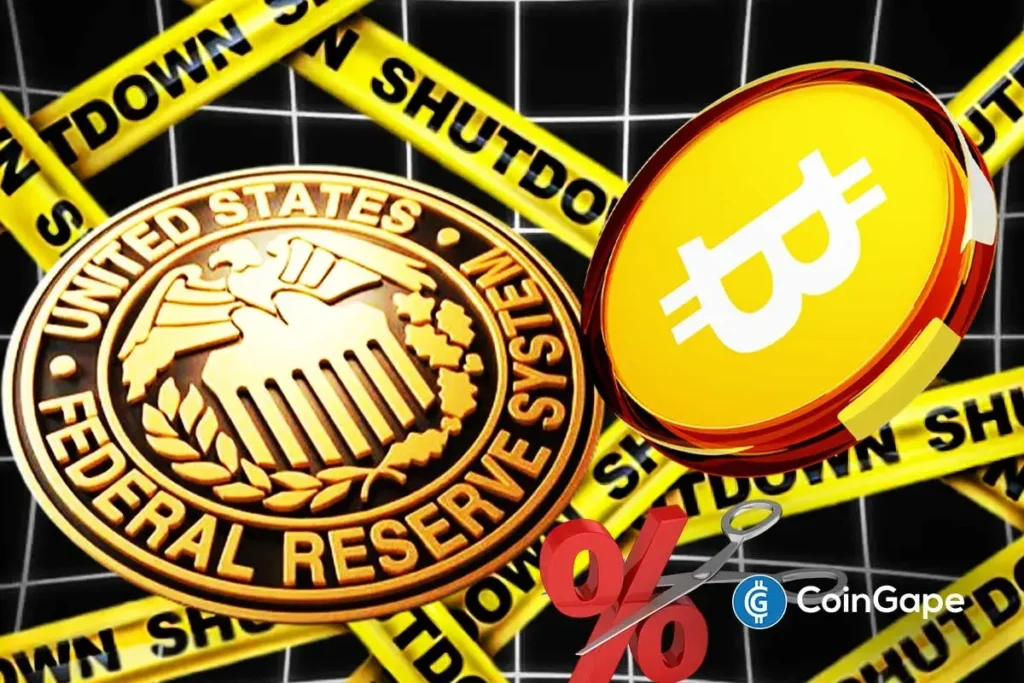Bitcoin and Crypto Market Faces Selling Pressure Amid US Government Shutdown Developments
Bitcoin is once again grappling with significant selling pressure, witnessing a notable 3% drop in its price over the past 24 hours. Currently trading at approximately $107,500, Bitcoin’s decline is paralleled by losses in major altcoins like Ethereum (ETH), Solana (SOL), XRP, and BNB, each experiencing a downturn of 3-5%. Despite recent news suggesting a likely resolution to the ongoing U.S. government shutdown, the overall enthusiasm in the crypto market remains muted. This environment, marked by a cumulative liquidation exceeding $320 million, has investors on edge, especially as they await anticipated actions from the Federal Reserve regarding interest rates.
One of the most alarming aspects of the current market conditions is the volume of liquidations, with nearly $250 million attributed to long positions. These figures reflect a broader trend where market participants are evaluating their strategies amid ongoing volatility. The surge in sell-offs coincides with a strengthening sentiment among some investors who are moving Bitcoin holdings to cold storage, suggesting a potential shift toward a more bullish outlook for the near future. On-chain data indicates that seller exhaustion may be setting in, which could stabilize Bitcoin’s price as investors become less willing to liquidate their positions.
Notably, while the price of Bitcoin faces downward pressure, several indicators hint at reduced volatility. Analyst Ted Pillows has pointed out a significant decline in the CBOE Volatility Index (VIX); the index has dropped by 10% recently and is down 36% from its peak last week. This decline indicates waning fear among investors, offering a glimmer of hope for Bitcoin and the broader cryptocurrency ecosystem. As trading activity shifts, many investors appear to be opting for a consolidation strategy, potentially mitigating the likelihood of further drastic price falls.
The impending conclusion of the U.S. government shutdown could catalyze important regulatory developments in the cryptocurrency space. According to White House adviser Kevin Hassett, there is optimism that the shutdown will soon end, which could reinvigorate discussions surrounding pending crypto measures. Additionally, the prediction platform Polymarket has shown a growing consensus that the shutdown may conclude sooner than expected, with November 5 emerging as a likely timeline. This optimism might reinvigorate market confidence, particularly as uncertainty surrounding governmental policy diminishes.
However, the macroeconomic landscape remains unstable due to ongoing tensions between the U.S. and China. Former President Trump has threatened to impose a staggering 155% tariff on Chinese goods unless negotiations progress favorably. This looming tariff war adds another layer of complexity to market conditions, creating a backdrop of uncertainty that influences investment decisions. Traders remain cautious, weighing potential consequences that could arise from these geopolitical tensions during an already tumultuous period for the crypto market.
The focus of many market analysts is now shifting toward the anticipated Federal Reserve rate cuts, which are expected to unfold next week. Experts predict a potential reduction of 50 basis points before the end of 2025, which could significantly influence various market sectors, including cryptocurrencies. Should the Fed move forward with rate cuts, it could provide a much-needed stimulus to risk assets like Bitcoin, potentially paving the way for price recovery in the face of current adversities. With both government actions and monetary policy potentially impacting market sentiment, investors will need to stay vigilant in navigating the complexities of this evolving landscape.
In conclusion, as Bitcoin and the wider crypto market grapple with selling pressure amid the specter of a U.S. government shutdown, investor behavior and macroeconomic developments are crucial to watch. While recent liquidations raise immediate concerns, underlying trends suggest that the downside pressure on Bitcoin could be limited. Strategic shifts like moving assets to cold storage indicate a potential recovery in market sentiment, while geopolitical and economic factors continue to pose challenges. As we approach crucial rate decisions from the Federal Reserve, these dynamics will be pivotal in shaping the future framework of the cryptocurrency market. Keeping an eye on these developments can provide valuable insights for stakeholders invested in Bitcoin and other altcoins moving forward.


